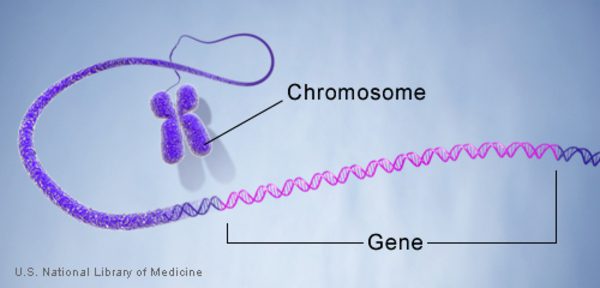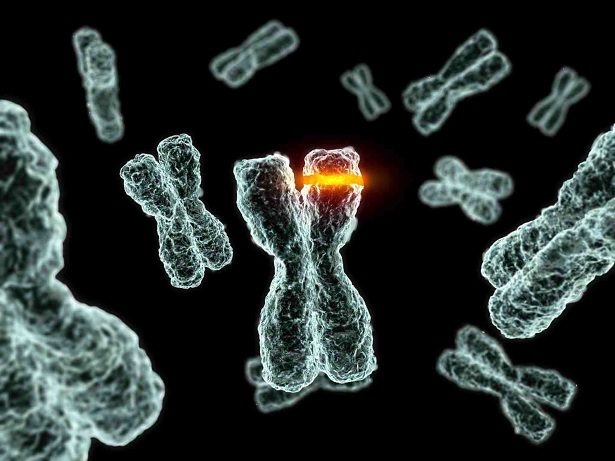What happens if our bodies suddenly mutate, huh? Did you instantly turn into Spiderman or Wolverine? Unlike that, don’t imagine examples of gene mutations in humans like in superhero fiction films. Because, a number of cases of gene mutations in humans actually cause abnormalities in the body, you know!
Well, so that you understand more, in this article, sinaumedia wants to invite you to know about gene mutations, along with examples of gene mutations in humans. Listen to the discussion until it’s finished, yes.
Definition of Gene Mutation
Gene mutations are changes that occur in the genetic material in cells. Changes in this material can make changes in properties, both at the cellular level and in living things.
In people who have gene mutations, the DNA in the cells will undergo changes. These mutations can occur only in DNA or extend to the chromosomes involving several types of genes.

Based on changes in the level of occurrence, mutations are divided into gene mutations and chromosomal mutations. The difference between gene mutations and chromosomal mutations lies in the scale of the changes. In gene mutations, only one gene is changed.
While chromosomal mutations change many genes in it. That is why, chromosomal mutations have a greater effect on the body and can cause more serious abnormalities when compared to mutations at the gene level.
You need to know, organisms that experience this mutation are usually called mutants. The cause of the mutation is called a mutagen. For example in the fictional Spiderman story, in this film the main character Peter Parker turns into a mutant. While the spider venom that causes mutations is called a mutagen.
Main Types of Gene Mutations
There are two main types of gene mutations, namely mutations in the number of bases in the sequence of nitrogenous bases and mutations in the types of nitrogenous bases. These kinds of gene mutations can affect the formation of amino acids that are different from the normal state. So that you understand better, see the following explanation.
1. Nitrogen Base Mutation
This mutation occurs due to the addition (addition), reduction (deletion), or doubling (duplication) of nitrogenous bases in the DNA chain of an organism.
The nitrogenous base mutation can affect the triplet reading of the genetic code in mRNA (messenger RNA). As a result, the amino acids that cells make are different from those that are supposed to be formed.
For example, there is a DNA chain that has the nitrogenous base sequence CCA–TAA–GCG. This DNA chain will be translated by mRNA, one-third of its nucleotide bases, into the amino acids glycine, isoleucine, and arginine.
If there is a mutation in the DNA chain, for example there is a T base, thymine, which suddenly increases the front of the chain, the reading of the 3 nucleotide bases will change to TCC-ATA-AGC.
If you have this, the amino acids that are formed will turn into arginine, tyrosine, and serine. This change in the addition of the thymine nucleotide base in front of the DNA chain is referred to as an addition gene mutation. Not only at the front, the addition of DNA chains can also occur in the middle, yes.
In addition to mutations in addition genes, changes can also occur if there is a duplication or duplication in the sequence of nucleotide bases in the DNA chain. For example, the beginning of the chain is CCA-TTA-GCG, because the cytosine is duplicated, the chain changes to CCC-ATA-AGC. In this situation, the amino acids formed by the chain will also change.
Lastly, there is a change in the nucleotide base in the DNA chain which is called a deletion. A deletion is a reduction in the nitrogen sequence in DNA. For example, initially the DNA chain is CCA-TTA-GCG, then the cytosine at the beginning of the chain is deletion and is lost. As a result, the DNA chain will turn into CAT-AAG-CG.

2. Nitrogen Base Type Mutation
Types of nitrogenous bases in DNA are divided into two groups, there are purines consisting of adenine and guanine (A and G), and pyrimidines consisting of cytosine and thymine (C and T).
In nitrogenous base type mutations, the changes can occur in similar groups or are called transition substitution gene mutations. For example, adenine turns into guanine, or thymine turns into cytosine. If the change occurs in a different group, between purines and pyrimidines, the gene mutation is called a transversion substitution.
Examples of Gene Mutations in Humans
By now, you must have understood more about gene mutation, right? To be clear, you should also know examples of gene mutations in humans. Until now, gene mutations in humans have more adverse effects on the condition of the body, you know!
One of the examples of gene mutations in humans can cause errors in the formation of red blood cells. Red blood cells that are initially round in shape turn into a sickle shape or commonly called sickle cell anemia .
This sickle shape makes blood flow easily blocked so that less oxygen is carried by the blood, blood cells die quickly. The body of patients with sickle cell anemia is usually easily tired, dizzy, painful, has difficulty breathing, and can experience damage to several organs of the body.
Another example of gene mutations in humans is cancer. Cancer occurs due to errors in the formation of amino acids that affect the cell division cycle.
Cells in the body of cancer sufferers undergo mutations and divide continuously without stopping, until finally damaging the function of the sufferer’s organs. If that’s the case, gene mutations in humans can cause severe organ damage, or even make the sufferer die,

